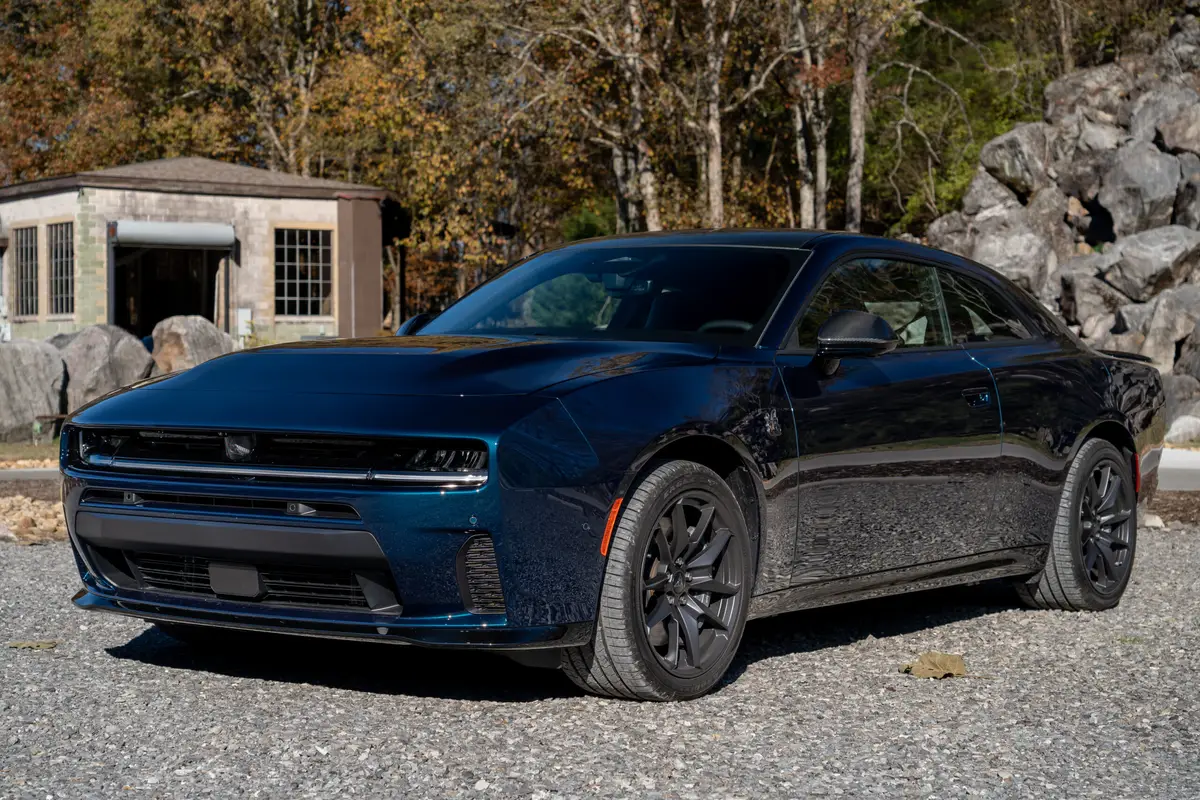The Morning Call and Mcall.com's view
Certain assumptions can be made about particular types of cars. For example, it can be expected that a large station wagon will holds lot of people and lots of cargo; a very small economy car will deliver high miles per gallon, and a sports car will have very good roadability, plenty of power on tap, above average interior ambiance and a certain flair and gracefulness to its styling.
It can also be assumed that a sports car will be somewhat more expensive. But then why shouldn’t it be, since every other non-essential item and toy in life usually is. And although a sports car may not be the most practical automobile at times, it certainly can provide the most interesting means of getting from point A to point B. In addition it can also provide a great shot to the ego.
With all of this in mind, we can assume that the Chrysler Conquest TSi is a blast to drive, has lots of power, is loaded with luxury and looks great. Also, it is getting up there a bit in price. In fact, it is Chrysler’s most expensive car.
Right now I think it would be a fair assumption that the question on most readers’ minds would be ”What is a Chrysler Conquest TSi?” Aside from being one of Chrysler’s best kept secrets, the Conquest TSi is one of the offshoots of the corporation’s overall plan for division diversification: Chrysler gets the luxury, Dodge the performance and Plymouth the practical. Or at least, to a certain degree. But then what is Chrysler Division doing with a real high performance sports car? Well this year Chrysler gave up its Laser so Dodge could have the monopoly on the Daytona type of car.
But on the other hand, it took away the Conquest from both Dodge and Plymouth and put its name on it. Even when Dodge and Plymouth had the Conquest it wasn’t all that well known. It seemed to be just something to fill a gap. And that too is sort of a shame since it is really an excellent car that deserves a little better treatment. The Conquest (under any name) is built in Japan by Mitsubishi, the company that supplied Chrysler Corp. with those great little Colts and Champs before it geared itself up for small car production. (The Colt is available in Plymouth and Dodge and the Conquest also is sold by Mitsubishi in this country under the name Starion.)
But no matter how its sliced, the Conquest TSi is an impressive car well worth a look by anyone interested in a sports car. For basics, the car has a wheelbase of 95.9 inches, length of 173.2 inches, width of 66.3 inches, height of 50.2 inches and curb weight of about 2,600 pounds. The interior is well laid out with plenty of knobs, buttons, switches and gauges to keep one busy and impress passengers.
The test car – supplied by Scott Chrysler-Plymouth, Allentown – had burgundy leather upholstery that not only looked, felt and smelled good, but also provided an interesting contrast to the car’s white exterior. The drive r and front seat passenger had plenty of room and comfort. There is a rear seat and, like most sports cars, it is best suited for occasional use. Since it is a hatchback, the split seat backs can be folded to provide more cargo carrying capacity. But even with the rear seats and security cover in place, the trunk is decently sized for this type of car and can hold a couple of pieces of luggage.
The Conquest TSi is an attractively styled car with fast back, sloping hood, concealed headlamps, flared fenders and built-in spoilers. However, it is hardly what you could call a distinguished looking sports car. The test car was mistaken for a Nissan 300Z, Toyota Supra, Mazda RX-7 and Porsche 928 and 944. Perhaps this is simply because the Conquest TSi is less known than these other models.
A front engine/rear drive configuration is used to its best advantage in this car. The four-wheel independent suspension is tightly tuned for cornering or even driving in as raight line. The ride, understandably, is stiff though not uncomfortable. Handling is predictable and impressive. Never once during the test period did the car even come close to breaking loose, and, believe me, it was put through some tough maneuvers. Contributing to the handling are the large and different sized tires. Up front are P205/55R16, while the rear has P225/50R16. The wheels are also differently sized – 7 inches wide in front and 8 inches in the rear.
Supplying the juice is a highly tuned, intercooled, turbocharged, multi- port fuel-injected version of the Mitsubishi 2.6 liter/156 cubic inch four- cylinder engine. In any state of tune, this is a dandy engine that has been powering Mitsubishi and Chrysler cars for years. It is an innovative engine that first came out with such features as three valves per cylinder (for more effective combustion) and a counterbalanced crankshaft (for smoother and quieter running). It was and still is the largest four-cylinder engine offered.
The TSi (standing for turbo sport intercooler) version of this engine gets its extra power from, first, the turbocharger – in essence an air pump that is run off exhaust gases and compresses the fuel/air mixture for a bigger charge in the combustion chamber – and, second, the intercooler – a simple device that removes much of the turbo-induced heat from the engine’s intake air, thus increasing the density of the fuel/ air mix and optimizing combustion. This, very briefly, is what is taking place under the hood of the Conquest TSi. The process is just slightly more complicated but you should get the idea by now. What is very amazing, if you happen to be looking over the car, is that the intercooler (responsible for a big 15 percent increase in turbo boost) is so small. It resembles a radiator and measures 8 by 16 by 2.5 inches and is located just beneath the front air dam.
And after all is said and done, TSi’s engine is rated at 176 horsepower at 5,000 rpm and 220 foot pounds torque at 2,500 rpm. Performance, as one can safely assume, is excellent. Just place the five-speed manual transmission in first gear, lay on the accelerator while easing up on the clutch, and the TSi moves forward with about the same velocity as a bluefish hitting a fresh mullet (for non-fishermen, that’s pretty fast; in fact as about as fast as a teen-ager’s hand shoots out when offered the family car keys for the first time). And things don’t ease up as you go through the gears. It just keeps moving and grooving. All without even a hint of turbo lag.
Even more surprising than the performance is the fuel mileage. Now the TSi is not an economy car, but it doesn’t kill you at the pumps. The test car averaged 16 miles per gallon for city driving and 24 over the highways on unleaded premium.
Full price on the test car came to $19,307, which could be expensive or inexpensive, depending on your outlook an d pocketbook. Base price for the car is $14,726, including a destination charge of $225, and its extensive list of standard equipment includes an anti-theft system, power four-wheel disc brakes, quartz clock, speed control, rear window defroster, power windows, tinted glass, power antenna, power door locks, power steering, full gauges, AM-FM stereo with cassette, rear wiper/washer and cast aluminum wheels.
At $2,806, the most expensive option is the Intercooler Engine group, and it includes limited slip differential, anti-skid rear brake system, special body panels, large wheels and tires, dual power mirrors, performance exhaust and, of course, the intercooler turbo engine. The other options included air conditioning, $843; leather seats, $414; sun roof, $267, and carpet mats, $26. The Conquest is covered by several warranties: a 1-year/12,000-mile basic vehicle; a 3-year/36,000-mile power train; 3-year/36,000-mile electronics, and a 5-year/50,000-mile outer ody corrosion.
Latest news



